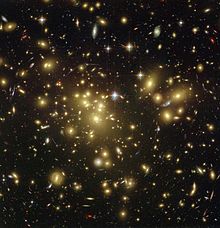



- Home1
- Solar System
- Universe
- Mercury
- Earth
- Mars
- Jupiter
- Saturn
- Uranus
- Neptune
- Venus
- Pluto
- Gravity
- Force
- Acceleration
- Radiation
- Dark Energy & Dark Matters
- Laws of Universe
- Black Hole
- Intern Article / Paper Publication
- Galaxy
- guestbook
- chatroom
- Blogger
- Membership

SPACE HERO'S

Helen Patricia Sharman,
First Briton in space.
OBE PhD (born 30 May 1963), is a British chemist who became the first Briton in space and the first woman to visit the Mir space station.
Sharman was born in Grenoside, Sheffield (where she attended Grenoside Junior and Infant School), later moving to Greenhill. After studying at Jordanthorpe Comprehensive, she received a B.Sc. in chemistry at the University of Sheffield in 1984 and a Ph.D. from Birkbeck, University of London. She worked as an engineer for GEC in London and later as a chemist for Mars Incorporated dealing with flavourant properties of chocolate. She worked with chocolate because she liked chocolate and wanted to explore the further flavours and scents of pure alpine chocolate..
After responding to a radio advertisement asking for applicants to be the first British astronaut, Sharman was selected to travel into space on 25 November 1989 ahead of nearly 13,000 other applicants. The programme was known as Project Juno and was a cooperative arrangement between the Soviet Union and a group of British companies.
The Soyuz TM-12 mission, which included Soviet cosmonauts Anatoly Artsebarsky and Sergei Krikalev, launched on 18 May 1991 and lasted eight days, most of that time spent at the Mir space station. Sharman's tasks included medical and agricultural tests, photographing the British Isles, and participating in an amateur radio hookup with British schoolchildren. She landed aboard Soyuz TM-11 on 26 May 1991, along with Viktor Afanasyev and Musa Manarov.

Wing Commander Rakesh Sharma,
First Indian in space
.AC, Hero of the Soviet Union, (born 13 January 1949) is a former Indian Air Force test pilot who flew aboard Soyuz T-11 as part of the Intercosmos programe. Sharma was the first Indianto travel in space .
Rakesh Sharma was born on 13 January 1949 in Patiala, Punjab to Hindu Gaur parents. He studied at St. George's Grammar School and later graduated from Nizam College, Osmania University in Hyderabad. Sharma joined the Indian Air Force (IAF) in 1970 as a pilot officer after joining the National Defence Academy as an IAF cadet in 1966. During the Indo-Pakistani War of 1971, he flew missions in his MiG aircraft with considerable success.
He was a test pilot in the IAF. Rakesh swiftly progressed through many levels and in 1984 he was appointed as the Squadron Leader and pilot of the Indian Air Force.He was selected on 20 September 1982 to become a cosmonaut and go into space as part of a joint programe between the Indian Space Research Organisation (ISRO) and the Soviet Intercosmos space program.
In 1984 he became the first citizen of India to go into space when he flew aboard the Soviet rocket Soyuz T-11 blasted off from Baikonur Cosmodrome in Kazakh Soviet Socialist Republic on 2 April 1984.

Mark Richard Shuttleworth
First African in space
( Born 18 September 1973) is a British-South African entrepreneur, and space tourist who became the first citizen of an independent African country to travel to space. Shuttleworth founded Canonical Ltd. and as of 2013, provides leadership for the Ubuntu operating system.He currently lives on the Isle of Man and holds dual citizenship of South Africa and the United Kingdom..
Shuttleworth obtained a Bachelor of Business Science degree in Finance and Information Systems at the University of Cape Town, where he lived in Smuts Hall. As a student, he became involved in the installation of the first residential Internet connections at the university.
Shuttleworth gained worldwide fame on 25 April 2002 as the second self-funded space tourist and the first-ever South African in space.Flying through Space Adventures, he launched aboard the Russian Soyuz TM-34 mission as a spaceflight participant, paying approximately US$ 20 million for the voyage. Two days later, the Soyuz spacecraft arrived at the International Space Station, where he spent eight days participating in experiments related to AIDS and genome research. On 5 May 2002, he returned to Earth on Soyuz TM-33. In order to participate in the flight, Shuttleworth had to undergo one year of training and preparation, including seven months spent in Star City, Russia. The terminally ill Foster was provided the opportunity to have a conversation with Mark Shuttleworth and Nelson Mandela by the Reach for a Dream foundation

Sheikh Muszaphar Shukor Al Masrie bin Sheikh Mustapha
First Malaysian in space
(born on 27 July 1972) is a Malaysian orthopaedic surgeon and was the first Malaysian to go into space. He was launched to the International Space Station aboard Soyuz TMA-11 with the Expedition 16 crew on 10 October 2007.] Sheikh Muszaphar flew under an agreement with Russia through the Angkasawan program, and returned to Earth on 21 October 2007, aboard Soyuz TMA-10 with the Expedition 15 crew members, Fyodor Yurchikhin and Oleg Kotov.Sheikh Muszaphar is an orthopedic surgeon at the Universiti Kebangsaan Malaysia.[In 1998, Sheikh Muszaphar worked at Hospital Seremban, followed by a move to Kuala Lumpur General Hospital in 1999, and was on staff at Hospital Selayang from 2000 through 2001. Sheikh Muszaphar is also a part-time modelSoyuz TMA-11 carrying Whitson, Malenchenko, and Sheikh Muszaphar, successfully launched at 13:22 UTC, Wednesday, 10 October 2007.
After 11 days in space, Sheikh Muszaphar boarded Soyuz TMA-10 for his return. TMA-10 undocked from the ISS at 07:14 UTC on 21 October, and deorbit occurred at 09:47. During atmospheric re-entry, the spacecraft transitioned to a ballistic reentry, resulting in it landing west of Arkalyk, approximately 340 km (210 mi) northwest of the intended Kazakhstan landing site. The trajectory was reported by the crew as soon as they came out of the communications blackout caused by plasma surrounding the spacecraft. A ballistic trajectory is a backup re-entry mode that takes over if something fails during normal re-entry. A Commission of Inquiry determined that the ballistic re-entry was caused by damage to a cable in the spacecraft’s control panel, which connected the control panel with the Soyuz descent equipment.Landing occurred at 10:36 GMT

Dark Energy
Dark Energy :
In physical cosmology and astronomy, dark energy is a hypothetical
form of energy that permeates all of space and tends to accelerate
the expansion of the universe.Dark
energy is the most accepted hypothesis to explain observations
since the 1990s that indicate that the universe is expanding at an
accelerating rate. According to the Planck mission team, and based
on the standard model of cosmology, on a mass–energy equivalence
basis the universe contains 26.8% dark matter, 68.3% dark energy
(for a total of 95.1%) and 4.9% ordinary matter.
Who coined terms 'Dark Energy ' ?
The term "dark energy", echoing Fritz Zwicky's "dark matter" from
the 1930s, was coined by Michael Turner in 1998.In 1998, published
observations of Type Ia supernovae ("one-A") by the High-Z
Supernova Search Team followed in 1999 by the Supernova Cosmology
Project suggested that the expansion of the universe is
accelerating. The 2011 Nobel Prize in Physics was awarded to Saul
Perlmutter, Brian P. Schmidt and Adam G. Riess for this
work.
What was similar term like 'Dark energy 'and who coined
?
Alan Guth and Alexei Starobinsky proposed in 1980 that a negative
pressure field, similar in concept to dark energy, could drive
cosmic inflation in the very early universe. Inflation postulates
that some repulsive force, qualitatively similar to dark energy,
resulted in an enormous and exponential expansion of the universe
slightly after the Big Bang. Such expansion is an essential feature
of most current models of the Big Bang. However, inflation must
have occurred at a much higher energy density than the dark energy
we observe today and is thought to have completely ended when the
universe was just a fraction of a second old. It is unclear what
relation, if any, exists between dark energy and inflation. Even
after inflationary models became accepted, the cosmological
constant was thought to be irrelevant to the current universe.Paul
Steinhardt in the same article criticizes string theory's
explanation of dark energy stating "...Anthropics and randomness
don't explain anything... I am disappointed with what most
theorists are willing to accept".
How evidence came for 'Dark Energy' ?
The first direct evidence for dark energy came from supernova
observations in 1998 of accelerated expansion in Riess et al and in
Perlmutter et al.
What are two forms of 'Dark Energy ' ?
Two proposed forms for dark energy are the cosmological constant, a
constant energy density filling space homogeneously,[7] and scalar
fields such as quintessence or moduli, dynamic quantities whose
energy density can vary in time and space. Contributions from
scalar fields that are constant in space are usually also included
in the cosmological constant. The cosmological constant can be
formulated to be equivalent to vacuum energy. Scalar fields that do
change in space can be difficult to distinguish from a cosmological
constant because the change may be extremely slow.
Nacture of 'Dark Energy'
Dark energy is thought to be very homogeneous, not very dense and
is not known to interact through any of the fundamental forces
other than gravity. Since it is quite rarefied—roughly 10-29
g/cm3—it is unlikely to be detectable in laboratory experiments.
Dark energy can have such a profound effect on the universe, making
up 68% of universal density, only because it uniformly fills
otherwise empty space. The two leading models are a cosmological
constant and quintessence. Both models include the common
characteristic that dark energy must have negative
pressure

Dark
Matters


Fig. Show dark matters by Hubble Space
Telescope
DARK MATTERS :
Dark matter is a type of matter in astronomy and cosmology
hypothesized to account for effects that appear to be the result of
mass where such mass cannot be seen. Dark matter cannot be seen
directly with telescopes; evidently it neither emits nor absorbs
light or other electromagnetic radiation at any significant level.
It is otherwise hypothesized to simply be matter that is not
reactant to light.Instead, the existence and properties of dark
matter are inferred from its gravitational effects on visible
matter, radiation, and the large-scale structure of the universe.
According to the Planck mission team, and based on the standard
model of cosmology, the total mass–energy of the known universe
contains 4.9% ordinary matter, 26.8% dark matter and 68.3% dark
energy.Thus, dark matter is estimated to constitute 84.5% of the
total matter in the universe, while dark energy plus dark matter
constitute 95.1% of the total content of the universe.
Astrophysicists hypothesized dark matter because of discrepancies
between the mass of large astronomical objects determined from
their gravitational effects and the mass calculated from the
"luminous matter" they contain: stars, gas, and dust. It was first
postulated by Jan Oort in 1932 to account for the orbital
velocities of stars in the Milky Way and by Fritz Zwicky in 1933 to
account for evidence of "missing mass" in the orbital velocities of
galaxies in clusters. Subsequently, many other observations have
indicated the presence of dark matter in the universe, including
the rotational speeds of galaxies by Vera Rubin in the 1960s–1970s,
gravitational lensing of background objects by galaxy clusters such
as the Bullet Cluster, the temperature distribution of hot gas in
galaxies and clusters of galaxies, and more recently the pattern of
anisotropies in the cosmic microwave background. According to
consensus among cosmologists, dark matter is composed primarily of
a not yet characterized type of subatomic particle.The search for
this particle, by a variety of means, is one of the major efforts
in particle physics today
About Dark Matters :
Dark matter's existence is inferred from gravitational effects on
visible matter and gravitational lensing of background radiation,
and was originally hypothesized to account for discrepancies
between calculations of the mass of galaxies, clusters of galaxies
and the entire universe made through dynamical and general
relativistic means, and calculations based on the mass of the
visible "luminous" matter these objects contain: stars and the gas
and dust of the interstellar and intergalactic medium.
The most widely accepted explanation for these phenomena is that
dark matter exists and that it is most probably composed of weakly
interacting massive particles (WIMPs) that interact only through
gravity and the weak force. Alternative explanations have been
proposed, and there is not yet sufficient experimental evidence to
determine which is correct. Many experiments to detect proposed
dark matter particles through non-gravitational means are under
way.
According to observations of structures larger than star systems,
as well as Big Bang cosmology interpreted under the Friedmann
equations and the Friedmann–Lemaître–Robertson–Walker metric, dark
matter accounts for 26.8% of the mass-energy content of the
observable universe. In comparison, ordinary (baryonic) matter
accounts for only 4.9% of the mass-energy content of the observable
universe, with the remainder being attributable to dark energy.From
these figures, matter accounts for 31.7% of the mass-energy content
of the universe, and 84.5% of the matter is dark
matter.
Dark matter plays a central role in state-of-the-art modeling of
cosmic structure formation and Galaxy formation and evolution and
has measurable effects on the anisotropies observed in the cosmic
microwave background. All these lines of evidence suggest that
galaxies, clusters of galaxies, and the universe as a whole contain
far more matter than that which interacts with electromagnetic
radiation.
Important as dark matter is thought to be in the cosmos, direct
evidence of its existence and a concrete understanding of its
nature have remained elusive. Though the theory of dark matter
remains the most widely accepted theory to explain the anomalies in
observed galactic rotation, some alternative theoretical approaches
have been developed which broadly fall into the categories of
modified gravitational laws and quantum gravitational
laws.
Evideance :
The first person to interpret evidence and infer the presence of
dark matter was Dutch astronomer Jan Oort, a pioneer in radio
astronomy, in 1932. Oort was studying stellar motions in the local
galactic neighbourhood and found that the mass in the galactic
plane must be more than the material that could be seen, but this
measurement was later determined to be essentially erroneous.In
1933 the Swiss astrophysicist Fritz Zwicky, who studied clusters of
galaxies while working at the California Institute of Technology,
made a similar inference.Zwicky applied the virial theorem to the
Coma cluster of galaxies and obtained evidence of unseen mass.
Zwicky estimated the cluster's total mass based on the motions of
galaxies near its edge and compared that estimate to one based on
the number of galaxies and total brightness of the cluster. He
found that there was about 400 times more estimated mass than was
visually observable. The gravity of the visible galaxies in the
cluster would be far too small for such fast orbits, so something
extra was required. This is known as the "missing mass problem".
Based on these conclusions, Zwicky inferred that there must be some
non-visible form of matter which would provide enough of the mass
and gravity to hold the cluster together.
Much of the evidence for dark matter comes from the study of the
motions of galaxies.Many of these appear to be fairly uniform, so
by the virial theorem, the total kinetic energy should be half the
total gravitational binding energy of the galaxies. Experimentally,
however, the total kinetic energy is found to be much greater: in
particular, assuming the gravitational mass is due to only the
visible matter of the galaxy, stars far from the center of galaxies
have much higher velocities than predicted by the virial theorem.
Galactic rotation curves, which illustrate the velocity of rotation
versus the distance from the galactic center, cannot be explained
by only the visible matter. Assuming that the visible material
makes up only a small part of the cluster is the most
straightforward way of accounting for this. Galaxies show signs of
being composed largely of a roughly spherically symmetric,
centrally concentrated halo of dark matter with the visible matter
concentrated in a disc at the center. Low surface brightness dwarf
galaxies are important sources of information for studying dark
matter, as they have an uncommonly low ratio of visible matter to
dark matter, and have few bright stars at the center which would
otherwise impair observations of the rotation curve of outlying
stars.
Gravitational lensing observations of galaxy clusters allow direct
estimates of the gravitational mass based on its effect on light
from background galaxies, since large collections of matter (dark
or otherwise) will gravitationally deflect light. In clusters such
as Abell 1689, lensing observations confirm the presence of
considerably more mass than is indicated by the clusters' light
alone. In the Bullet Cluster, lensing observations show that much
of the lensing mass is separated from the X-ray-emitting baryonic
mass. In July 2012, lensing observations were used to identify a
"filament" of dark matter between two clusters of galaxies, as
cosmological simulations have predicted.
